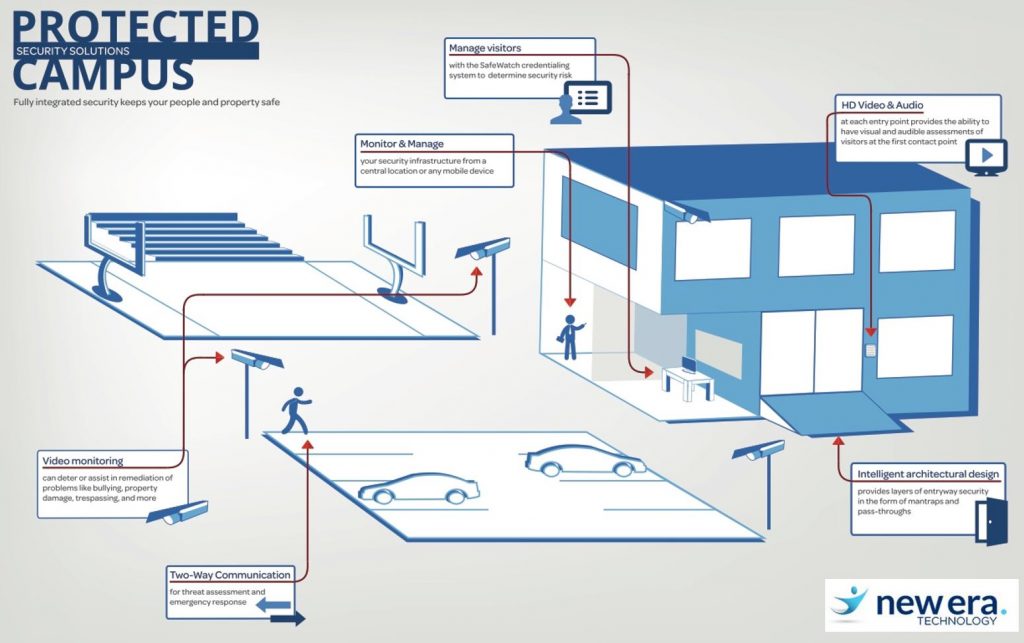CNN recently called eSports “an explosive billion-dollar industry.”
Forbes pondered, “How Much Can The eSports Market Grow in 2018?”
Forward-thinking businesses, colleges and universities, and technology integrators across the country are wondering, “How can we get in on this game?”
What Are eSports?
For those who may not know, eSports are a form of competitive, multiplayer video games, typically played in large arenas. Audience members can watch the games live on big screens in the arenas, for an up-close view of players expressions and reactions, or from their homes on streaming video.
We wouldn’t be surprised to see niche eSports bars opening within the next decade where people watch their favorite gamers compete in a first-person shooter, while we devour wings and sip brews, much as we may watch our beloved Eagles or Phillies in a bar with friends today.
Most often, today, the competitions are streamed on services like Twitch, one of the largest eSports streaming platforms, and viewed at home.
In the first quarter of 2018, 82 percent of viewership hours for the top streaming game titles were viewed on Twitch; the service surpassed YouTube Gaming as the most popular eSports channel.
The Opportunities in eSports: By the Numbers
eSports revenue grew from $493 million in 2016 to $655 million in 2017, according to a report by NewZoo. And revenue could exceed $900 million, nearly doubling in just two years, by the end of 2018.
Most of the revenue comes from sponsorship opportunities, advertising, media rights paid for by the streaming services to air the games, and money paid by game publishers to host events. Of course, as with any sport, revenue is also generated by tickets and merchandise.
That’s an important thing to remember because, at its heart, eSports is, in fact, a sport. Competitors play on teams and receive salaries as well as bonuses in the form of prize money. Many earn six figures and some earn millions.
And, as with other sports, from baseball to soccer, gaming begins in the lower grades. Colleges field competitive teams with hopefuls looking to make it into the sport’s major leagues. College tournaments attract crowds in the tens of thousands, as well.
Because eSports are, perhaps, the only athletic event where male and female physiology does not come into play during competition, it could, potentially, become one of the first co-ed varsity college sports. In fact, women and men play against and alongside each other in the League of Legends pro league, although the sport remains overwhelmingly male-dominated for now.
Getting in on the Game
Colleges thinking about bolstering their athletic programs would be wise to look at eSports as a way of recruiting students, making a name for themselves in a rapidly growing field, and bringing additional revenue to the university.
Of course, getting into eSports requires the upfront investment of a practice arena and potentially even a larger venue to host competitions. It is not a decision to be made lightly.
Speaking with a technology integration firm that specializes in working with colleges and universities, with a solid background in networking systems as well as performance venues and conventional sports arenas, can help. eSports merges all these disciplines, requiring an integrator who’s got skin in the game, so to speak, with each specialty.
What Does Your eSports Venue Need?
Designing an eSport venue appears, on the surface, much like designing a football stadium. In fact, some college sports stadiums can be retrofit to accommodate eSports.
You’ll need similar elements, including video screens, audio systems, and a robust network. But it’s the level and quality of these systems that may differ.
Gamers will be sitting close to the screens, requiring high pixel pitch LEDs. While today, HD resolution would seem adequate, it won’t be long before 4K becomes a necessity as the resolution of the games rise.
Line-of-sight considerations for audience members will be more important than in a live sporting event, where the emphasis remains on the players on the field, not the screen. Additional, high-quality UHD screens or high pixel-pitch LEDs may be needed to fill upper-level seats.
Since many games today feature soundtracks in 5.1 or even 7.1 surround sound, audio systems will need to be designed and tuned to accommodate the highest level of digital audio, with perfect clarify for spoken word, as well.
Don’t Forget the Network
Perhaps the biggest difference between a football stadium and an eSports arena will be the network. Quality of Service, adequate bandwidth, and network security will all need to rival the best enterprise-grade systems available today and installed by an integrator with the expertise to manage the network.
The Local Area Network will have to be robust enough to accommodate multiple players in fast-paced games where ping or lag is simply not acceptable. With hundreds of thousands in prize money at stake in every game, security, too, is critical, since a hacker could affect the outcome of a game.
The Wide Area Network must have enough bandwidth to support streaming the games live. Again, security will be paramount, since any security breach could, theoretically, affect game play or cost the streaming platform millions in lost advertising and lost reputation.
Remote monitoring and management will play a crucial role, along with 24/7 remote service in case the network crashes prior to an event.
Embracing a New Era in eSports
Integration firms are already noticing the opportunities to better serve customers and are putting effort into learning more about the equipment and design requirements of eSports venues.
eSports may represent the next big vertical market in audio visual design and networking systems integration.
The best integrators for the job will already be adept in the various disciplines required to pull of an eSports venue installation without a glitch.

 Canada
Canada Australia
Australia New Zealand
New Zealand UAE
UAE United Kingdom
United Kingdom




